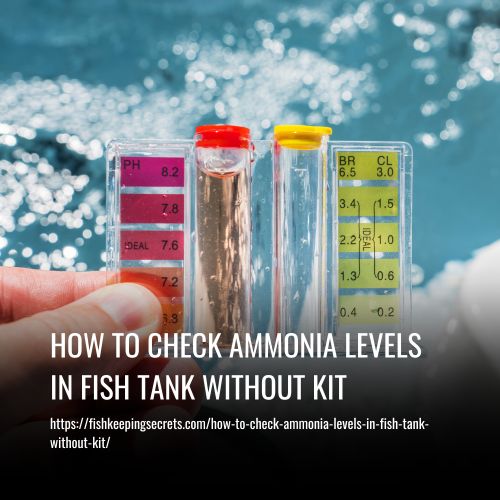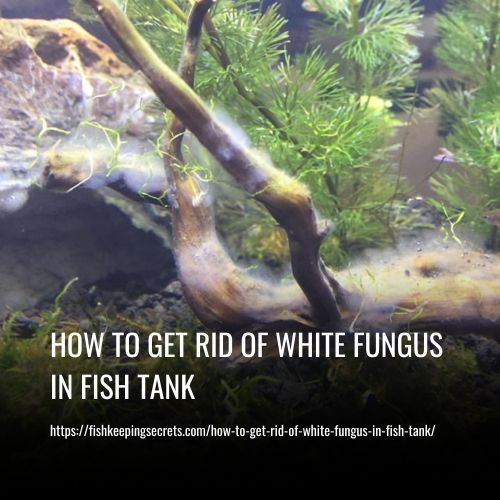A 3-gallon tank is very small and can only accommodate a very limited number of fish. It is recommended to keep only one betta fish in a tank of this size. Other small fish, such as a few shrimp or snails, may also be suitable for a tank of this size. It is important to consider the size and behavior of the fish when determining how many can be kept in a tank.

Size And Type Of The Fish
When it comes to choosing the size and type of fish for your tank, there are some important factors you should consider. First, the fish should not be any bigger than 2 inches as an adult, as larger fish can cause growth problems and resultant stress and premature death.
Also, if you plan on having more than one of the same species then you need to ensure that the tank is big enough to handle a group of them – overcrowding will cause stress in the smaller tanks.
Additionally, you should check if your chosen species are able to breed in captivity – this could lead to overcrowding, so take the necessary steps such as removing newborns back to the store or breeder – where accepted – or getting a bigger tank. With these considerations in mind, you can choose a healthy, happy tank mate with confidence!
Pet Stocking Ideas for a 3-gallon Tank
If you’re looking to stock your 3-gallon tank with the right pet, it’s important to make sure the environment is suitable for their specific needs. A good rule of thumb is to choose smaller fish that aren’t too active and produce minimal waste. Bettas, guppies, and Endler’s livebearers are all excellent choices for this kind of tank.
Nerite snails are also a good option if you don’t want to have fish in your tank. If you’re looking for more population in your nano tank, then try adding some shrimp-like Amano shrimp, cherry shrimp, or ghost shrimp – up to four or six depending on the type. Doing so will give you a fuller tank without taking up too much space!
Below are some considerations for selecting fish species suitable for a 3-gallon tank.
List of Fishes That Can Live in a 3-gallon Tank
When selecting fish for a 3-gallon tank, it is important to choose species that are small and not too active. Fish such as betta fish, guppies, Endler’s livebearers, and danios are all good choices. Smaller tetras like neon tetras or even white cloud minnows can also work well in this size tank.
Guppies
| Size | 1.2-2 inches |
| Care Level | Easy |
| Diet | Omnivorous |
| Temperature | 72-82°F |
| Temperament | Easygoing |
| Number of Guppies you can keep in a 3-gallon tank | 2-3 |
Guppies are an ideal fish for a 3-gallon aquarium for their size. As one of the most popular fish that can live in such a small tank, these colorful creatures easily stand out from the crowd! Guppies range in size from 0.6 to 1.4 inches for males and 1.2 to 2 inches for females, meaning they won’t take up too much space in your tank.
Betta Fish
| Size | 2.25 inches |
| Care Level | Easy |
| Diet | Carnivorous |
| Temperature | 75-80°F |
| Temperament | Semi-aggressive |
| Number of Bettas you can keep in a 3-gallon tank | 1 |
Betta Fish make an excellent addition to a 3-gallon tank. These adorable fish are popular not only for their vibrant appearance and beautiful fins but also because they can also be taught tricks! Yes, betta fish can actually swim through hoops!
Regardless of whether you decide to go with one betta fish or multiple occupants in your 3-gallon tank, you’ll find that this species makes for a dynamic and exciting addition to any aquatic home.
Neon Tetras
| Size | 1.2 inches |
| Care Level | Easy |
| Diet | Omnivorous |
| Temperature | 70-81°F |
| Temperament | Calm |
| Number of Tetras you can keep in a 3-gallon tank | 1-2 |
Neon Tetras are one of the most popular fish that can easily live in a 3-gallon tank. Despite their reputation as being schooling fish, these freshwater fish feel safe and secure when roaming around in groups of three or fewer.
If you’re looking for an easy-to-care-for fish that won’t take up too much space, Neon tetras are definitely your best bet.
Least Killifish
| Size | 1.2 inches |
| Care Level | Easy |
| Diet | Omnivorous |
| Temperature | 68-78°F |
| Temperament | Calm |
| Number of Least Killifish you can keep in a 3-gallon tank | 3 |
Least Killifish, otherwise known as Heterandria Formosa, are small fish that can make a great addition to any 3-gallon tank. They are the smallest species of livebearer fish and one of the world’s tiniest fish species and are not always easy to find in stores.
Thankfully, they are accessible through hobbyist groups so you should have no trouble finding them.
Chili Rasbora
| Size | 0.7 inches |
| Care Level | Easy |
| Diet | Omnivorous |
| Temperature | 68-82°F |
| Temperament | Calm |
| Number of Chili Rasbora you can keep in a 3-gallon tank | 5-6 |
Chili Rasbora is a small, peaceful fish species that make for great inhabitants of a three-gallon tank. With their tiny size and easy maintenance needs, they’re slowly gaining popularity among aquarium hobbyists.
What’s more, their bright colors and active nature will give your tank an attractive look. They love to shoal together, so you should keep at least six of them in the same tank.
Chili Rasbora are the ideal addition to any 3-gallon tank! Not only do they stay healthy with minimal care but their colorful habits promise a lively environment for your tank.
Zebra Danios
| Size | 2 inches |
| Care Level | Easy |
| Diet | Omnivorous |
| Temperature | 64-75°F |
| Temperament | Calm |
| Number of Zebra Danios you can keep in a 3-gallon tank | 4 |
Zebra Danios are a great choice for a 3-gallon tank. They’re hardy, require minimal care, and can thrive in even an ultra-small nano tank if it’s given adequate attention. Zebra Danios also like to eat almost anything you give them. Whether it be Aqueon tropical flakes, worms, or shrimp pellets – these fish will be sure to consume the food with enthusiasm.
In addition to their hardiness and dietary preferences, Zebra Danios also have beautiful stripes that add interest and vibrant color to any aquarium setup! These are definitely worth considering when trying to pick out the perfect fish type for your 3-gallon tank.
Factors Affecting the Number of Fish in a 3-gallon Tank
When it comes to setting up a 3-gallon tank, there are various factors that can affect how many fish you can fit in the tank. These include the size and type of fish, as well as equipment such as live plants and filters. Additionally, your tank’s surface area is also important to consider.
More fish means higher oxygen exchange rates so a larger water surface area is vital for healthy fish. A tall narrow tank or a short wide one may be able to store the same amount of liquid but their surface areas differ significantly. Finally, filtration needs to be taken into consideration as well; the filter should have at least six times the capacity of your fish tank for optimal performance.
It is necessary to keep these factors in mind when setting up your 3-gallon tank – otherwise, you might end up with too many fishes in it!
How To Effectively Maintain A 3-gallon Tank
Maintaining a 3-gallon tank is not as easy as it might seem. Sure, it looks small and manageable but its size makes it prone to sudden changes in water quality or temperature. Monitoring your tank is important in order to detect any potential changes in water parameters.
Another potential issue involves the bioloads produced by these tiny fish. Despite their size, they can still produce significant amounts of bioload over time and if left unchecked, this could lead to dangerous levels of accumulation in your tank–which will eventually stress out your fish. To reduce the risk of such an event, get yourself a sponge filter to help keep these contaminants at bay.
It is recommended to replace 25% of the tank water weekly for maintenance purposes. And don’t forget about enrichment features too! Introduce some floating plants or other kinds of greenery for your fishy friends to explore around and provide them with interesting flavors and textures as well!
Bigger tanks are always better
When it comes to fish tanks, bigger is always better. A tank that’s larger than a 3-gallon size will give you more room to add decorations and plants and be able to keep a larger number of fish. You won’t be limited to bettas either, as an increase in size will open the door to a multitude of other types of fish.
Plus, with more space, your fish will have ample room to swim freely around and play. This can help prevent fights over territories from occurring, making them happier overall. As a bonus, having more space for aquascaping also means that you can decorate your aquarium however you please; nano plants won’t be necessary! Finally, since harmful buildup occurs more slowly in large tanks than in small ones, you’ll have fewer water changes that need to be done. All these factors make it easier to maintain a large-sized aquarium.
FAQs
When it comes to 3-gallon fish tanks, not all fish are suitable for living in them. The fact is, some very active and social fish like barbs, platies, and Pygmy Cory cats need much more space than a 3-gallon tank can provide. They require a large, spacious swimming area and should be kept in groups of at least 6 to 8 individuals.
It is recommended that 10 to 15 percent of the water in a small tank be replaced weekly.
A 3.5-gallon tank can typically accommodate fish up to a maximum length of 3.7 inches, as well as a variety of small shrimp and corals for both freshwater and saltwater aquariums.
Conclusion:
As you can see, there are a number of considerations when it comes to keeping fish in a 3-gallon tank. Making sure that the fish have plenty of space and the correct equipment is essential. When all these factors are taken into account, the number of fish that can fit in a 3-gallon tank depends on the types and sizes of fish kept in it.
However, following these guidelines should ensure that your tank is adequately sized for your chosen species so they can thrive and lead healthy lives.



